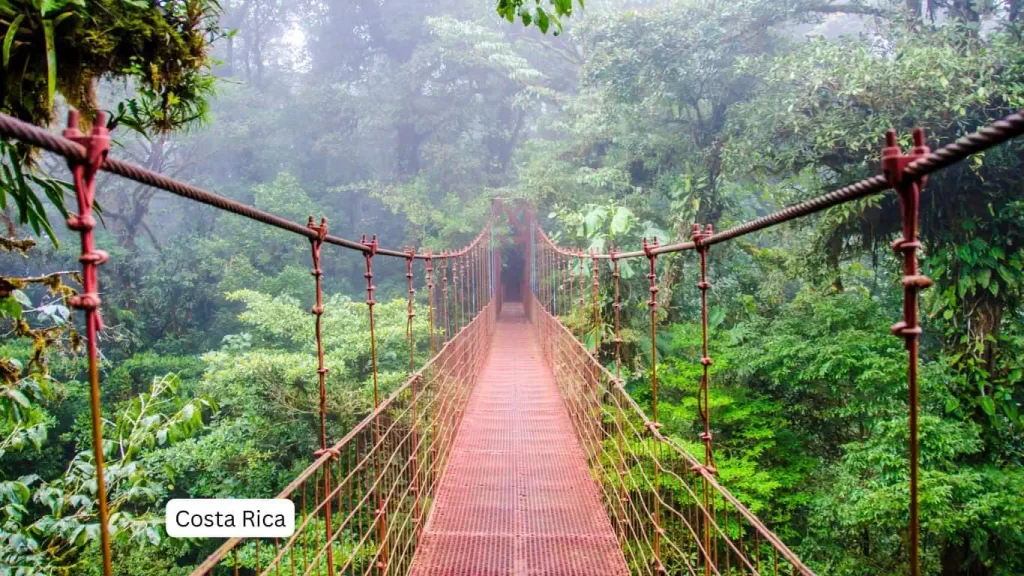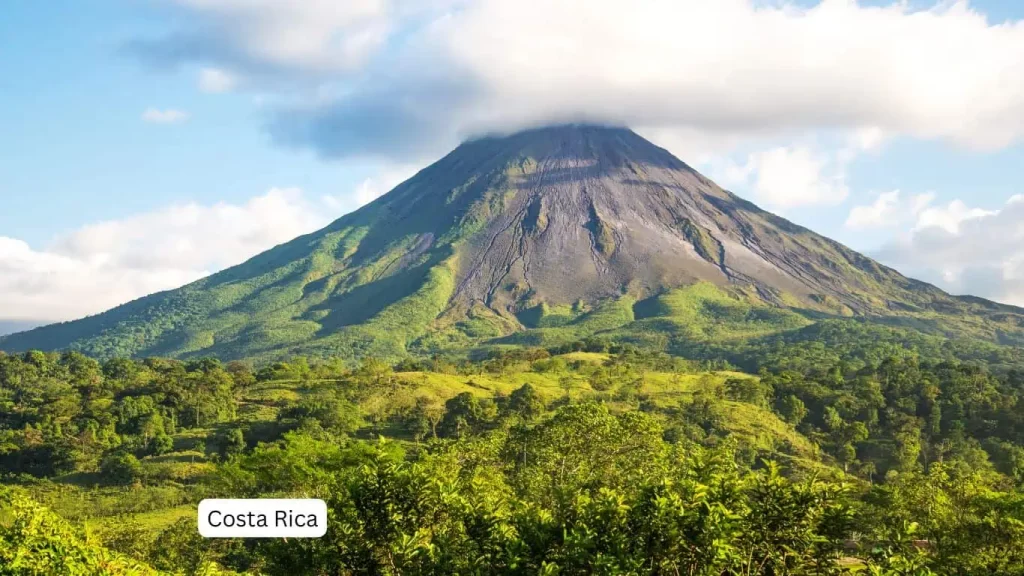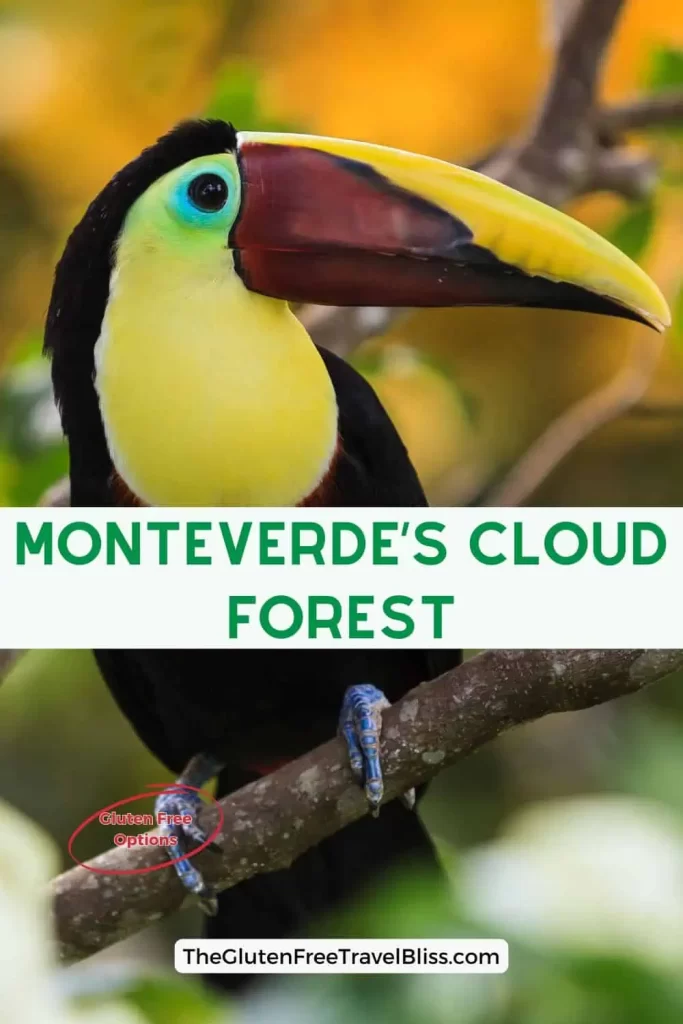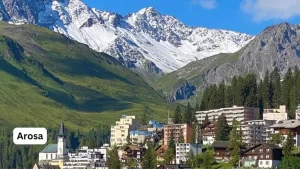Costa Rica in June: Why It’s the Best Time to Visit (Despite the Rain!)
Gluten-Free Travels in Costa Rica: Embracing the Green Season in June
As a mom and spouse of gluten-free travelers, I’ve always been drawn to destinations that offer a perfect blend of natural beauty, adventure, and culinary delights. Costa Rica, with its lush rainforests, pristine beaches, and vibrant culture, has long been on my bucket list. And while many consider the drier months as the best time to visit, I chose to embrace the country’s green season and embarked on an unforgettable journey in the month of June.
Costa Rica Weather in June & Why It’s the Best Time to Visit
June marks the beginning of Costa Rica’s rainy season, also known as the green season. While the idea of visiting during the rainy months might raise some concerns, there are numerous advantages to traveling during this time of the year:
1. Fewer Crowds and Lower Prices: As June falls within Costa Rica’s low season, you’ll encounter fewer tourists and lower prices on accommodations, activities, and flights. This means more opportunities to immerse yourself in the local culture without the hustle and bustle of peak season.
2. Beautiful Scenery: The rains breathe new life into the lush landscapes, creating a vibrant tapestry of greens and blooming flora. Waterfalls are at their most powerful, and the cloud forests are shrouded in a mystical mist, making for stunning photo opportunities.
3. Unique Wildlife Encounters: The green season is an excellent time for spotting various species of nesting sea turtles, such as the green sea turtles and olive ridley sea turtles, who come ashore to lay their eggs on the country’s beautiful beaches. Additionally, the calving season for humpback whales off the Pacific coast offers the chance to witness these majestic creatures up close.
June is a prime time to experience the best of Costa Rica’s natural wonders while avoiding the crowds and peak season prices. While it falls within the country’s rainy season, the Costa Rica weather in June is still favorable, with fewer visitors and lower humidity levels compared to the rainiest months.
This good time offers excellent opportunities to explore national parks like the famous Arenal Volcano and the remote Tortuguero National Park without the hassle of large crowds. For adventure seekers, June is an ideal month for whitewater rafting as the rivers swell with rainfall, providing thrilling rapids.
Families with non school-age children can also take advantage of June’s shoulder season, as it falls after the busy spring break period but before the high season and summer break kicks into full swing. Hence making it one of the best times to enjoy Costa Rica’s diverse landscapes and activities without the crowds and inflated prices.

Traveling to Costa Rica
When it comes to planning your journey to Costa Rica during June, there are several convenient options from the United States. Many travelers choose to fly into the capital city of San Jose, which offers direct flights from major U.S. hubs like Miami, Houston, and Los Angeles. Not only do these direct routes make for an easy travel experience, but they also provide the opportunity to take advantage of low season prices on airfare during this great time of year.
Another option is to explore package deals that combine flights and accommodations, often offering significant savings compared to booking separately. Once in Costa Rica, renting a car or arranging private transportation is recommended to fully explore the country’s diverse regions at your own pace.
Exploring Costa Rica’s Diverse Regions
During my June visit, I had the opportunity to explore several regions of Costa Rica, each offering its unique charm and experiences:
1. The Central Valley and San José:
As the capital city and the country’s cultural hub, San José was my starting point. Despite the occasional rain showers, the city’s lively markets, museums, and culinary scene provided a fascinating introduction to Costa Rican life. From there, I ventured into the Central Valley, where the average temperatures were pleasantly cooler, and the cloud forests were shrouded in a mystical mist.
2. The Northern Pacific Coast:
The Nicoya Peninsula and the Papagayo Peninsula were next on my itinerary. While these areas experienced slightly more rain than the central regions, the stunning beaches, such as Playa Hermosa, were far less crowded, allowing me to soak up the sun and enjoy the warm waters in relative seclusion.
3. The South Pacific:
The Osa Peninsula and the Manuel Antonio National Park were highlights of my trip. Despite the occasional heavy rains, the lush rainforests and pristine beaches were a sight to behold. I even had the chance to spot a few green sea turtles nesting on the beach, a true testament to the region’s rich biodiversity.
4. The Caribbean Coast:
While the Caribbean side of Costa Rica tends to be wetter during the green season, I couldn’t resist the allure of the vibrant town of Puerto Viejo. The laid-back atmosphere, vibrant Afro-Caribbean culture, and stunning beaches made for a memorable experience, even with the occasional rain shower.
Costa Rica’s Green Season: Why June is the Perfect Time to Visit
One of the most significant advantages of traveling during Costa Rica’s green season is the opportunity to fully immerse yourself in the country’s natural beauty without the distractions of large crowds and peak season prices. Here are a few tips for making the most of your green season adventure:
1. Pack for Rain: While the rain showers are typically short-lived, it’s essential to pack waterproof gear, including a lightweight rain jacket and quick-drying clothing.
2. Embrace the Unpaved Roads: Many remote areas in Costa Rica are accessible only by unpaved roads, which can become muddy during the rainy months. Embrace the adventure and consider renting a 4×4 vehicle for added convenience.
3. Plan for Early Mornings: The sun tends to be out in full force during the early morning hours, making it an ideal time to explore the great outdoors before the afternoon rain showers roll in.
4. Seek Drier Areas: While the entire country experiences rainfall during the green season, some areas, like the Nicoya Peninsula and Guanacaste Province, tend to be drier than others. Plan your itinerary accordingly if you prefer fewer rainy days.
5. Embrace the Local Culture: Costa Ricans, known as Ticos, have a deep appreciation for the green season and its role in sustaining the country’s natural beauty. Immerse yourself in their way of life and enjoy the celebrations and festivals that take place during this time of the year.

Seasons in Costa Rica
While the green season offers its own unique charms, Costa Rica’s tropical climate means there are pros and cons to visiting during the other seasons as well. The driest months, from late December through April, are considered the high season and one of the most popular times for a Costa Rica vacation. Advantages include sunny days, little rain, and cooler temperatures, making it the perfect time for beach vacations and outdoor adventures. However, this peak season also brings higher prices, larger crowds, and the potential for a tropical storm.
The shoulder months of May and November can be an excellent compromise, with good weather, fewer tourists, and lower prices than the high season. Father’s Day in June kicks off the wet season, which runs through October and is known for high humidity, frequent rain showers, and October’s heavier rainfall. While the wet season has its downsides like muddier trails and unpaved roads, it’s also an optimal time for rafting on swollen rivers and spotting nesting sea turtles.
December marks the second month of the dry season, with comfortable temperatures and mostly dry conditions, except for a spike in humidity around New Years. It’s also one of the hottest months, with high temperatures reaching into the 90s in some regions. Regardless of when you visit, Costa Rica’s tropical climate ensures a year-round warmth that makes it an appealing destination.
| Season | Months | Advantages | Disadvantages |
|---|---|---|---|
| Dry Season (High Season) | Late December – April | – Sunny days – Little rain – Cooler temperatures – Perfect for beach vacations and outdoor adventures | – Higher prices – Larger crowds – Potential for tropical storms |
| Shoulder Season | May, November | – Good weather – Fewer tourists – Lower prices than high season | – Some rainfall |
| Green Season (Wet Season) | June – October | – Fewer visitors – Low season prices – Optimal for rafting on swollen rivers – Nesting sea turtles | – Frequent rain showers – High humidity – Muddier trails and unpaved roads – October’s heavier rainfall |
| Early Dry Season | December | – Comfortable temperatures – Mostly dry conditions | – Spike in humidity around New Year’s – One of the hottest months with high temperatures |
Key attractions of the country
Here are 10 key attractions worth visiting in Costa Rica
- Arenal Volcano: This majestic stratovolcano is one of Costa Rica’s most iconic sights, with its perfect conical shape and the opportunity to witness lava flows and eruptions from a safe distance. The surrounding Arenal Volcano National Park offers hiking trails, natural hot springs, and stunning views.
- Manuel Antonio National Park: Renowned for its beautiful beaches, lush rainforests, and abundant wildlife, Manuel Antonio is one of Costa Rica’s most popular national parks. Visitors can spot sloths, monkeys, iguanas, and a variety of tropical birds while hiking the park’s trails or relaxing on its pristine white-sand beaches.
- Monteverde Cloud Forest Reserve: This vast reserve is a haven for nature lovers, with its misty cloud forests, hanging bridges, and diverse flora and fauna. Visitors can explore the reserve’s hiking trails, engage in zip-lining adventures, and learn about the area’s rich biodiversity.
- Tortuguero National Park: Accessible only by boat or small aircraft, this remote national park is a nesting ground for several species of sea turtles, including the endangered green turtle. Visitors can witness the turtles laying their eggs on the beaches or explore the park’s intricate network of canals and waterways.
- Corcovado National Park: Situated on the Osa Peninsula, Corcovado National Park is considered one of the most biologically diverse places on Earth. This vast expanse of pristine rainforest is home to a wide variety of animal species, including jaguars, tapirs, and scarlet macaws, making it a true paradise for wildlife enthusiasts.
- La Paz Waterfall Gardens: This private nature park is a must-visit for waterfall lovers, featuring a series of cascading waterfalls, hiking trails, and a butterfly observatory. Visitors can also explore the park’s hummingbird garden, serpentarium, and frog exhibits.
- Nicoya Peninsula Beaches: The stunning beaches along the Nicoya Peninsula offer a perfect blend of tranquility and adventure. From the renowned surf breaks of Playa Guiones to the secluded coves of Playa Samara, visitors can enjoy a range of water activities, including surfing, snorkeling, and beach hopping.
- Rincon de la Vieja National Park: This national park is home to the active Rincon de la Vieja Volcano, as well as steaming fumaroles, mud pots, and natural hot springs. Visitors can hike through the park’s diverse landscapes, ranging from dry forests to lush rainforests, and explore the area’s volcanic features.
- Rio Celeste (Blue River): The enchanting Rio Celeste is a must-see natural wonder, with its striking blue hue caused by the reflection of sunlight on the river’s mineral-rich waters. Visitors can hike along the river’s banks, admiring the vibrant colors and cascading waterfalls.
- Poás Volcano National Park: This national park is home to one of the world’s largest active volcanic craters, which visitors can safely observe from a lookout point. The park also features a smaller crater with a stunning turquoise-colored lake and hiking trails through the surrounding cloud forests.
Gluten-Free Travel in Costa Rica: Where to Eat Safely
Costa Rica offers a diverse and flavorful cuisine that incorporates fresh produce, seafood, and traditional ingredients like rice, beans, plantains, and corn. Many dishes are naturally gluten-free or can be easily modified to accommodate a gluten-free diet.
For celiacs and gluten-free travelers, finding safe and delicious food options in Costa Rica is relatively easy, especially in popular tourist destinations and larger cities. Here’s an overview of what to expect:
1. Traditional Costa Rican Dishes: Many staple dishes in Costa Rican cuisine are inherently gluten-free, such as gallo pinto (a rice and bean dish), casados (a meal consisting of rice, beans, plantains, and a protein), and patacones (fried green plantains). These can be enjoyed without worry at local restaurants and sodas (small, family-owned eateries). Of course, you need to check about cross-contamination.
2. Fresh Produce and Seafood: Costa Rica is abundant in fresh fruits, vegetables, and seafood, which are naturally gluten-free. Ceviche (a seafood dish cured in citrus juices), grilled fish, and fresh tropical fruits like pineapples, mangoes, and papayas are widely available and safe for celiacs.
3. Gluten-Free Bakeries and Cafés: In major cities like San José and touristy areas like Tamarindo and Manuel Antonio, you’ll find dedicated gluten-free bakeries and cafés that offer a variety of gluten-free breads, pastries, and other baked goods.
4. Accommodating Restaurants: Many restaurants, especially those catering to tourists, are aware of dietary restrictions and can accommodate gluten-free diets. It’s always a good idea to communicate your needs clearly with the server or chef to ensure your meals are prepared safely.
5. Supermarkets and Specialty Stores: Most major supermarkets in Costa Rica have dedicated gluten-free sections or clearly labeled gluten-free products, making it easy to stock up on safe snacks and ingredients for self-catering.
6. Cross-Contamination Awareness: While the awareness of gluten-free diets may vary in smaller towns and rural areas, most establishments in tourist hubs are familiar with the concept of cross-contamination and take necessary precautions. Keep in mind to double check with your server.
To ensure a safe and enjoyable dining experience, it’s recommended to carry gluten-free translation cards or use a mobile app to communicate your dietary needs effectively. Additionally, researching gluten-free-friendly restaurants and markets in your planned destinations ahead of time can help you make informed choices.
With a little preparation and communication, celiacs and gluten-free travelers can confidently explore and indulge in the diverse flavors of Costa Rican cuisine while enjoying a safe and memorable culinary experience.
As a gluten-free traveling family, I was pleasantly surprised by the wide array of delicious and safe dining options available in Costa Rica. Many restaurants, especially in popular tourist areas, are well-versed in accommodating dietary restrictions and offer gluten-free options on their menus.
Additionally, the abundance of fresh, locally sourced ingredients, such as fruits, vegetables, and seafood, made it easy to enjoy flavorful and naturally gluten-free dishes. We indulged in everything from traditional casados (a typical Costa Rican dish of rice, beans, plantains, and protein) to delectable ceviche and freshly caught seafood, all prepared with care and attention to our dietary needs.

Embracing the Green Season in Costa Rica was an unforgettable experience that allowed me to immerse myself in the country’s natural beauty, vibrant culture, and culinary delights without the crowds and high prices of peak season. Whether you’re an adventure seeker, a nature lover, or simply seeking a unique and authentic travel experience, I highly recommend considering a visit during the green season. Embrace the rain, the lush landscapes, and the opportunity to connect with the local Ticos in a way that truly captures the essence of this remarkable country.
FAQ Visiting Costa Rica
Is June a good time to visit Costa Rica?
Yes! June is the start of the green season, meaning lush landscapes, fewer crowds, and lower prices. Plus, wildlife spotting is excellent!
What’s the weather like in Costa Rica in June?
Expect warm temperatures (70°F-85°F) with afternoon rain showers. Mornings are often sunny, making it great for outdoor activities.
Is Costa Rica safe to visit in June?
Absolutely! While some areas experience heavy rain, most tourist spots remain accessible. Just pack waterproof gear and plan accordingly.
What’s the best place to visit in Costa Rica in June?
Popular spots include Arenal Volcano, Manuel Antonio, Tortuguero, and Nicoya Peninsula, where rainfall is moderate.
Is Costa Rica gluten-free friendly?
Yes! Many traditional dishes like gallo pinto, ceviche, and patacones are naturally gluten-free. Major cities have dedicated gluten-free restaurants.
If you prefer snorkeling to hiking, check out this post for Culebra or Roatan.
Planning a trip to Costa Rica? 🌴 What’s your top must-see destination in this beautiful country? Let me know in the comments below ⬇️⬇️⬇️
Want more gluten-free travel tips? Read my Ultimate Gluten-Free Travel Guide for top celiac-friendly destinations, restaurant tips & expert hacks!







